|
 |
Placed in the 'Milestones of Flight' Hall at the National Air and Space Museum on October 5, 2005. It sits alongside the Wright Flyer, Spirit of St. Louis, and Apollo 11's Columbia. |
Images by: Emeline Paat-Dahlstrom
Date: October 5, 2005
|
Click here for story from collectSPACE |
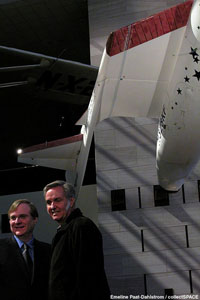 |
 |
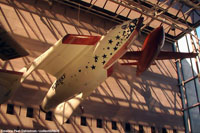 |
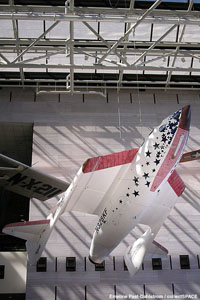 |
|
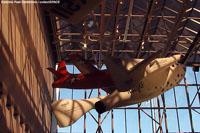 |
|
Older Images
|
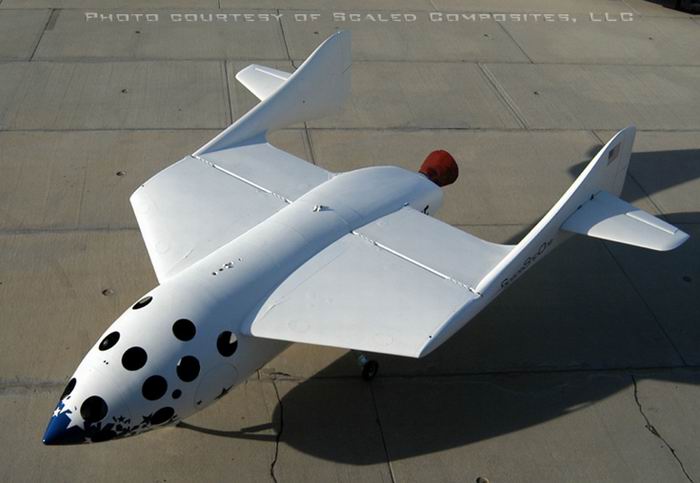
|
|
|
Location: Mojave Airport Civilian Flight Test Center
Photo by: Scaled Composites
|
|
|
From Wikipedia
The Scaled Composites model number of SpaceShipOne is 316.
SpaceShipOne is registered with the FAA as N328KF. 'N' is the prefix for US-registered aircraft; '328KF' stands for 328 thousand (K) feet (approximately 100 kilometers, the officially designated edge of space). The original choice of registry number, N100KM, was already taken. It is registered as a glider, reflecting the fact that most of its independent flight is unpowered.
All the SpaceShipOne flights have been based at the Mojave Airport Civilian Flight Test Center.
SpaceShipOne made its first flight, flight 01C, on May 20, 2003. It was an uncrewed captive carry flight test. Glide tests followed, starting with flight 03G on August 7, 2003. The first powered flight, flight 11P, was made on December 17, 2003, the 100th anniversary of the first ever powered flight by the Wright Brothers.
On April 1, 2004, Scaled Composites received the first license for sub-orbital piloted rocket flights to be issued by the US Department of Transportation. This license permits the company to conduct powered test flights for a period of one year. On June 17, 2004 Mojave Airport reclassified itself (part-time) as the Mojave Spaceport.
Flight 15P on June 21, 2004 was SpaceShipOne's first spaceflight, and the first privately-funded human spaceflight. X Prize flights followed, with flight 17P on October 4, 2004 winning the prize.
After the X Prize flights, SpaceShipOne will continue to make test flights, developing the technology further, in the process of designing future spacecraft such as the planned Virgin SpaceShip. It is also expected to carry a handful of paying passengers on barnstorming flights: those prospective space tourists who can't wait for routine space tourism and are sufficiently wealthy to afford the exorbitant fee.
There is a long-standing plan, known as task 21, that, once spaceflights have been demonstrated, SpaceShipOne will fly into space every Tuesday for twenty consecutive weeks, to demonstrate aircraft-like routine operation. As of September 2004, no date has yet been set for the start of task 21
|
|
|
|



